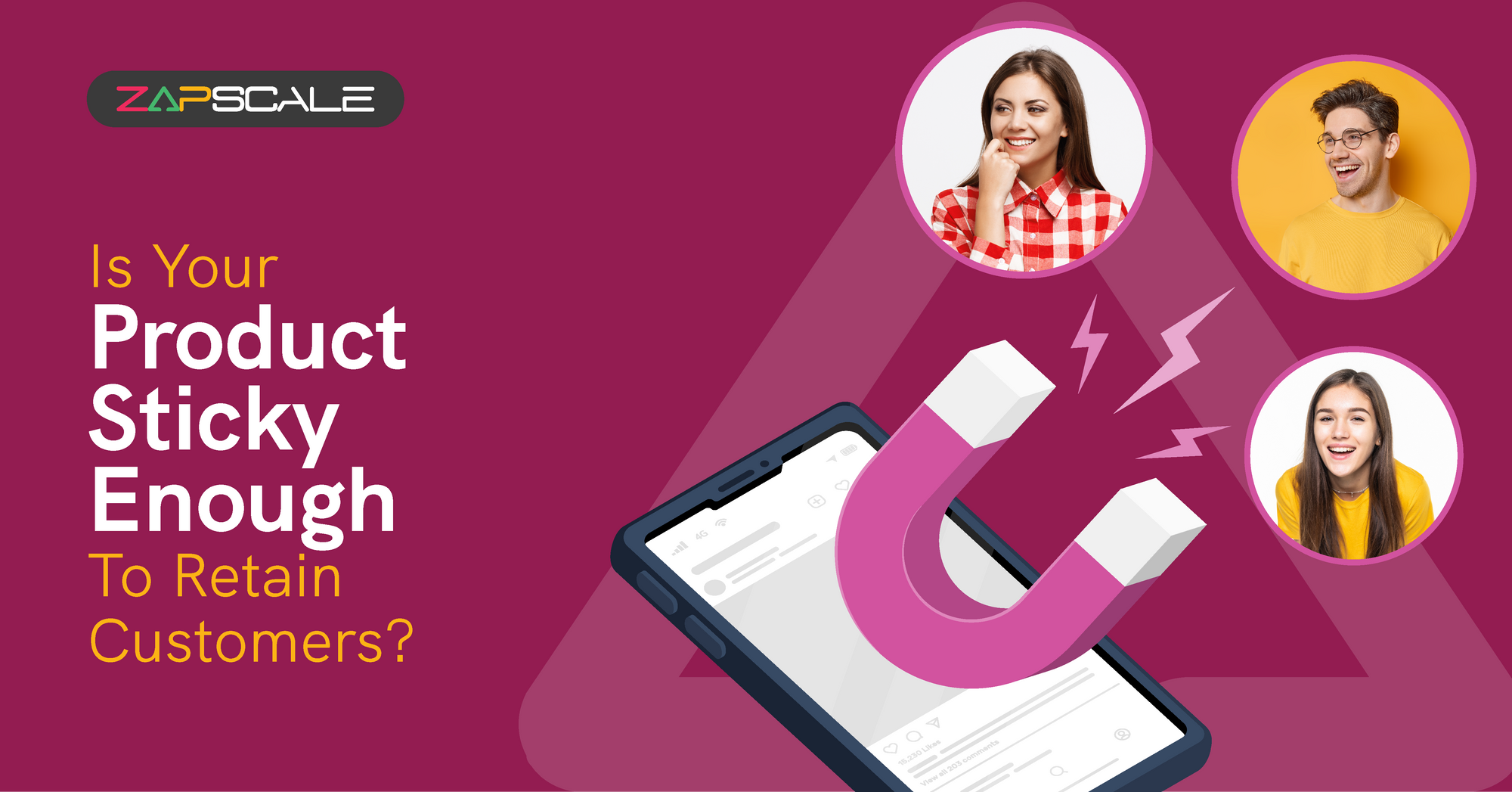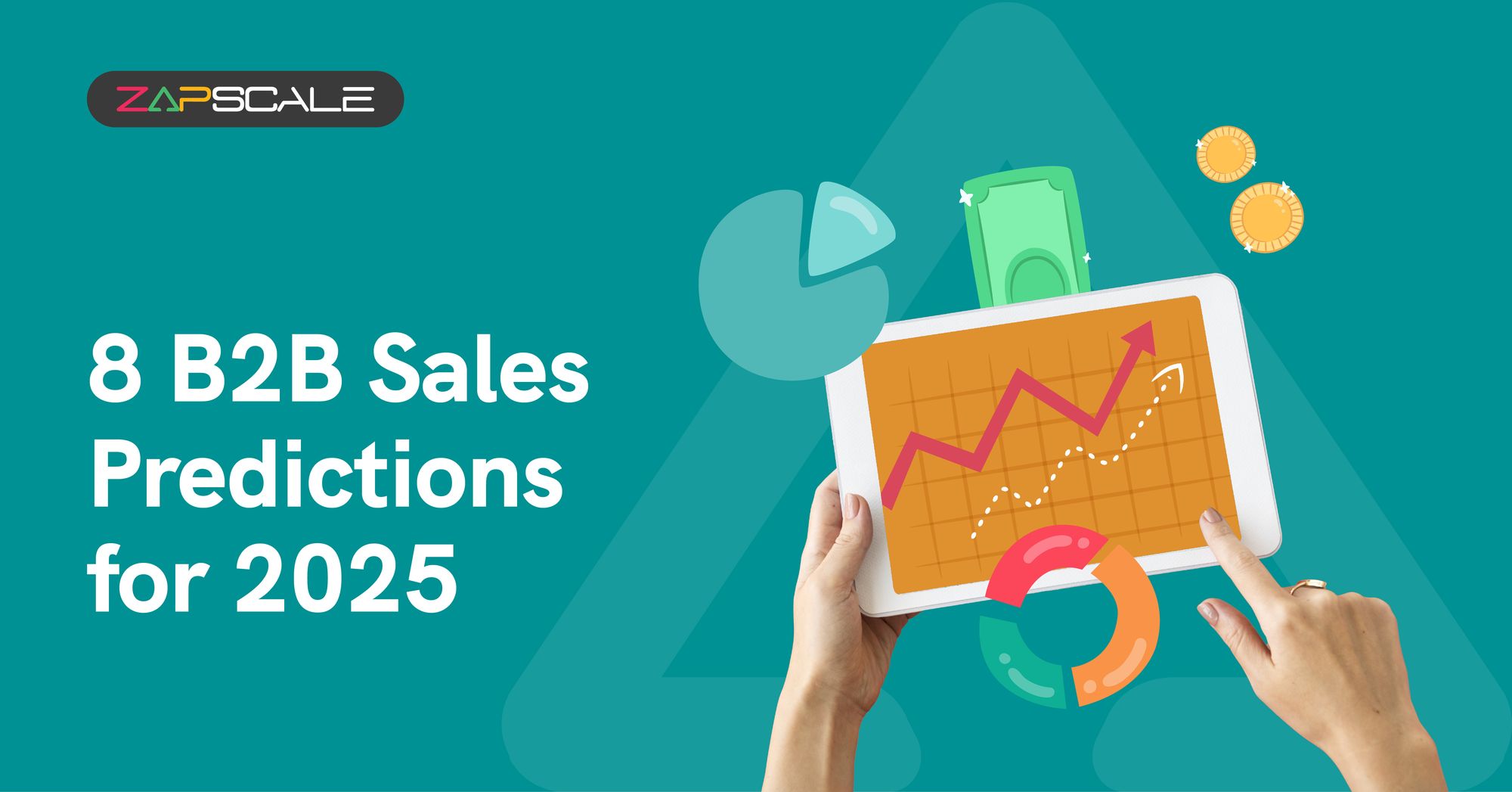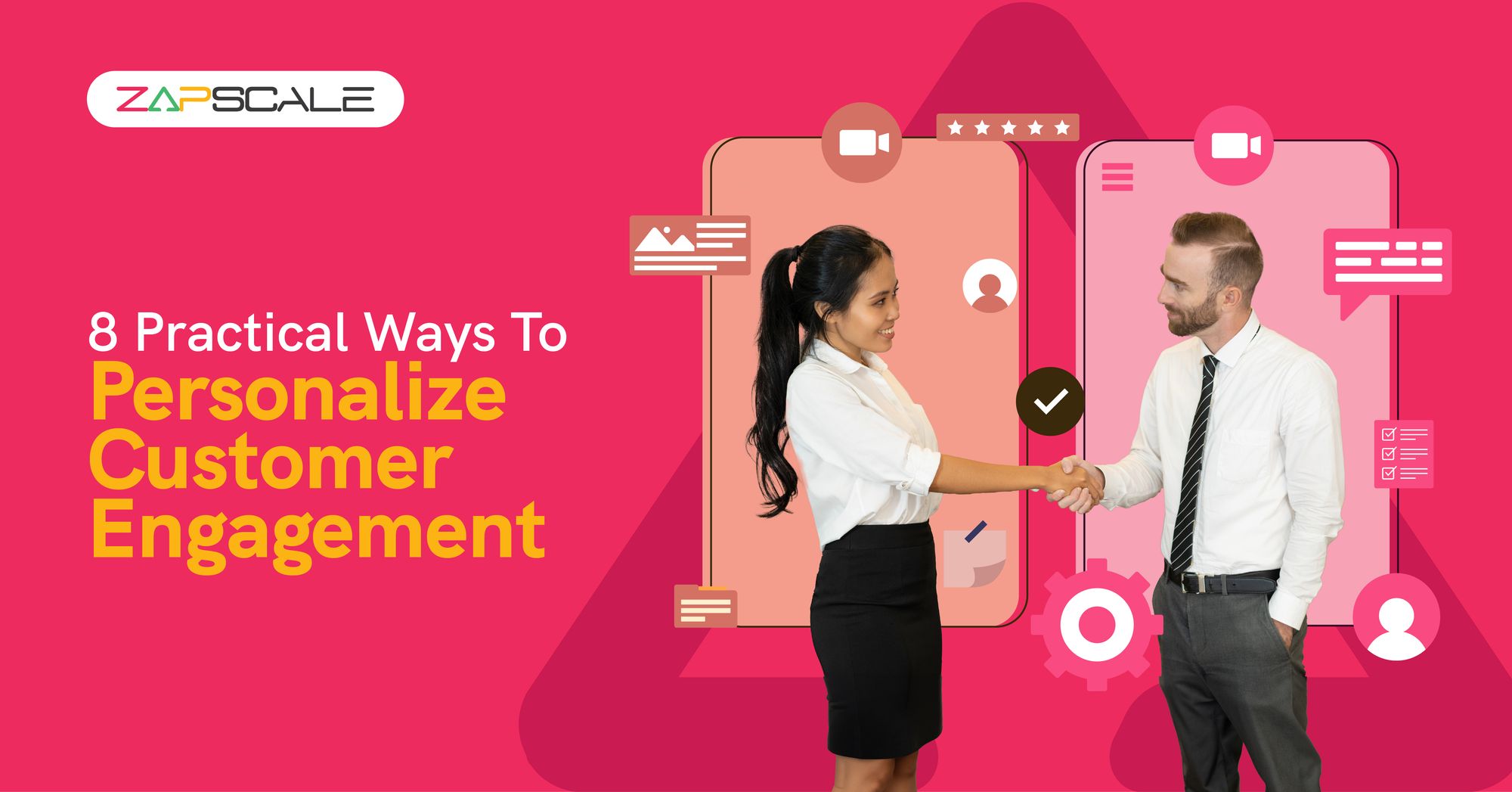CATEGORY > Customer Engagement
4 Customer Engagement Models to Drive Optimal SaaS Transformation
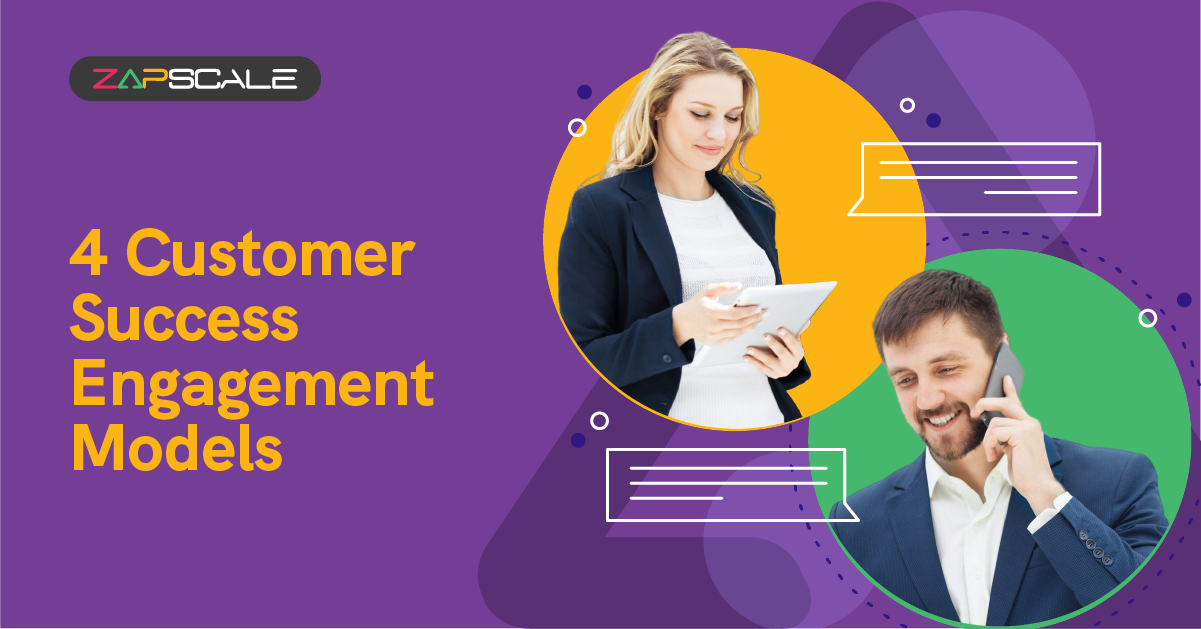
Introduction
In today's digital age, customers have high expectations from their chosen companies.
Modern customers desire more than just a product and want to feel valued and heard.
A robust customer engagement model enables firms to identify and respond to customer demands, increasing satisfaction, loyalty, and revenue.
Let’s continue reading further to gather more information about this strategic blueprint.
What Are Customer Engagement Models And Why Do You Need One?
A customer engagement model outlines how a company should interact with their customers following the sale.
The primary purpose of creating an engagement model is to develop long-term partnerships with customers.
As we all know, a customer's journey consists of two major phases - onboarding and adoption.

Based on the product itself, onboarding might be hands-on or self-service.
Following onboarding, businesses frequently choose between high-touch (regular check-ins) and low-touch (data-driven) ways to drive customer success.
A great engagement strategy entails more than just talking to customers.
It's about hearing, comprehending, and responding.
Companies may use data and technology to tailor their interactions to each customer, generating individualized experiences that foster trust and loyalty.
Launching The Ideal Engagement Model For Long-Term Success
Planning an effective engagement model surely matters but how you implement the same matters more than ever.
Let’s determine how to ideate and initiate the perfect customer engagement model.
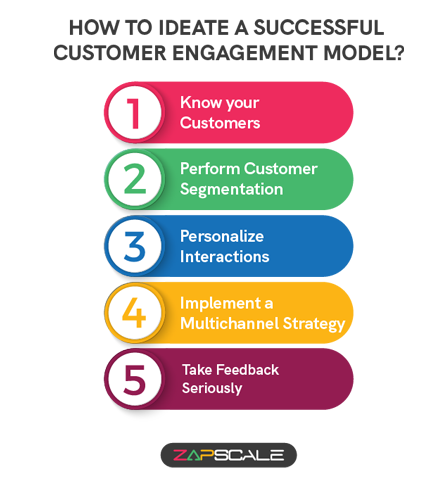
1. Know Your Customers
Before sowing the seeds of engagement, it’s important to empathize with your customers by learning about who they are and what they expect.
For successful interaction with customers, first, create detailed personas representing different customer groups.
Collect data from surveys, feedback, and analytics to better understand their requirements, preferences, and pain points.
Use this data to customize your interactions and content, ensuring that your engagement tactics satisfy individual needs while increasing overall customer satisfaction.
2. Perform Customer Segmentation
Customer segmentation can be a fruitful way to reach different categories of customers via a tailored approach.
Divide your customer base into various groups based on demographics, purchasing history, and engagement levels.
Targeting specific groups with targeted messages and offers allows you to make your communications more relevant, engaging, and fulfilling.
3. Personalize Interactions
Address customers by name, adapt material to their preferences, and make recommendations based on previous encounters.
Personalized experiences make customers feel valued, which increases the likelihood of positive engagement.
Leverage customer data and preferences to provide targeted experiences and communications.
4. Implement A Multichannel Strategy
Whether you engage through email, social media, or your website, the experience should be seamless and consistent.
Maintain uniformity across all customer touchpoints.
A multichannel approach promotes a consistent brand image and increases customer satisfaction by providing a seamless experience.
5. Take Feedback Seriously
Customer expectations change over time, therefore it's critical to reassess your interaction strategy.
Keep up with industry trends and customer feedback to find areas for improvement and make required changes.
Ask your customers to give feedback regularly and pay due cognizance to the same.
Use surveys, reviews, and direct feedback to learn about their experiences and preferences. With this unbiased customer data, you can make adjustments and show customers that their thoughts are valued.
4 Strategic Engagement Models To Maximize Customer Success
There are several types of customer engagement models, each delivering its own set of advantages.
Let’s learn about the top 4 engagement models that provide phenomenal benefits after deployment.
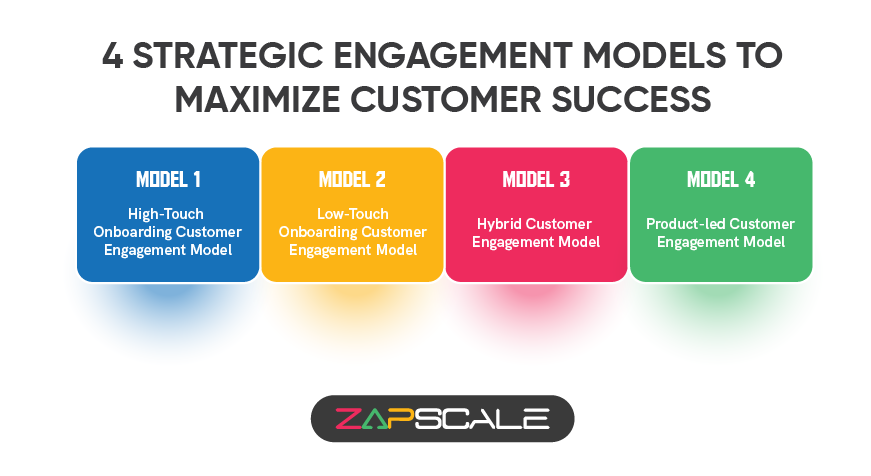
Model 1: High-Touch Onboarding Customer Engagement Model
The first engagement model on the list is the high-touch onboarding model.
The high-touch onboarding methodology takes a hands-on approach, with customers being introduced to an implementation team that provides individualized training and solution configuration once the contract is closed.
This technique is often used in enterprise software sales, particularly for complicated solutions involving several stakeholders.
It demands large resources, as higher-value transactions warrant the investment in intensive assistance.
The approach is ideal for businesses that provide sophisticated services and have customers who require customized assistance.
Model 2: Low-Touch Onboarding Customer Engagement Model
Contrary to the high-touch onboarding model, the low-touch onboarding model requires less supervision from the onboarding specialists.
Customers are often taught through automated resources such as video tutorials and in-app training rather than physical assistance.
This model is appropriate for products that are intuitive and require little customization, making it cost-effective and scalable for onboarding a large number of new customers.
For B2B customers that require more assistance, personal contact can be made available, however, this strategy is mostly based on self-service and digital resources.
Model 3: Hybrid Customer Engagement Model
Hybrid customer engagement models offer the best of both worlds!
A hybrid engagement model combines both high-touch and low-touch tactics to meet the diverse needs of customers.
For SaaS companies with multiple product tiers, such as basic, business, and enterprise, this entails providing varying degrees of support. Basic packages frequently employ low-touch methods, such as self-service tools and automated assistance, as they are easier and less expensive to administer.
On the other hand, higher-tier products (which are more complex and generate more income) usually include high-touch assistance from professional account managers to ensure correct setup and full-feature use.
This hybrid approach enables businesses to operate effectively while delivering specialized support depending on customer demands.
Model 4: Product-Led Customer Engagement Model
Speaking of a product-led customer engagement model, it’s a model that’s quite similar to a low-touch model but mainly contains user and product data.
Companies that employ product-led customer interaction to enable self-service journeys for customers rely significantly on product usage data, user behaviors, and customer health scores.
Many product-led customer engagement models even allow users to get a taste of the product for free without any commitment.

It’s a win-win for both users and the organization as users get to explore the product itself before making an informed choice, while businesses receive valuable data to enhance their customer acquisition and retention strategies.
Customer Success Engagement - 4 Hybrid Approaches
As discussed above, out of all the above-mentioned customer engagement models, the hybrid customer engagement model is particularly preferred.
Let’s take a look at 4 fascinating approaches associated with this client engagement model.
1. High-Touch Onboarding, Low-Touch Post-Onboarding
In this hybrid approach, customer success managers offer extensive assistance during the onboarding process to ensure that new customers are properly set up and can start using the product effectively.
This individualized assistance assists users in overcoming initial obstacles and establishing a solid basis for success.
Following onboarding, the emphasis moves to self-service tools such as in-product tutorials, FAQs, and online forums.
Customers may now get help whenever they choose, allowing them to become more self-sufficient users.
2. Low-Touch Onboarding, High-Touch Post-Onboarding
Another hybrid approach, low-touch onboarding, and high-touch post-onboarding, emphasizes self-paced learning during the onboarding process.
Once customers are familiar with the fundamentals of the product, customer success managers become more proactive and follow a high-touch approach.
They contact users after onboarding to identify any problems they may be experiencing and provide specialized assistance.
This guarantees customers receive prompt assistance when they require it most.
3. High-Touch Onboarding, High-Touch Post-Onboarding
This method focuses on developing strong, long-term relationships with customers.
Here, customer success managers offer personalized assistance throughout the customer journey, from onboarding to continuing use.
This high level of assistance ensures that customers always get the most out of the product with positive results.
It's suitable for high-value enterprise customers with complex needs and who want an elevated level of specialized service.
4. Low-Tocuh Onboarding, Low Touch Post Onboarding
This final approach underscores self-sufficiency for customers throughout their journey.
Onboarding is largely self-directed, with little human intervention.
Customers rely on in-product tools such as tutorials and documentation to get started.
Coming to post-onboarding assistance, follows a similar strategy, including self-service options such as knowledge bases, FAQs, and online forums.
This method is apt for products with intuitive user interfaces and customers who like to do things independently.
While it can be cost-effective, it may not be appropriate for advanced products or customers who require extensive assistance.
FAQs
1. How can customer feedback improve an engagement model?
Feedback identifies areas for improvement and helps customize the engagement strategy to meet customer demands and needs better.
2. Can a company use multiple customer engagement models simultaneously?
Yes, companies can mix and match models based on product tiers or customer demographics to improve engagement and support.
3. how frequently should a company reanalyze its customer engagement model?
It is highly recommended to review the customer engagement model at least once a year, or when substantial changes in customer behavior or industry trends occur.
ABOUT THE AUTHOR
Sonali is a social media enthusiast and creative content writer with 3+ years of experience. With a passion for storytelling, Sonali delivers content that inspires, informs, and captivate readers.
Popular from Customer Engagement
Quality Content,
Straight To Your Inbox!
Subscribe for the latest blogs, podcasts, webinars, and events!

Write a Blog
If you have experience in CS and
a flair for writing, we’d love to
feature you.
Write to us on
hello@zapscale.com
